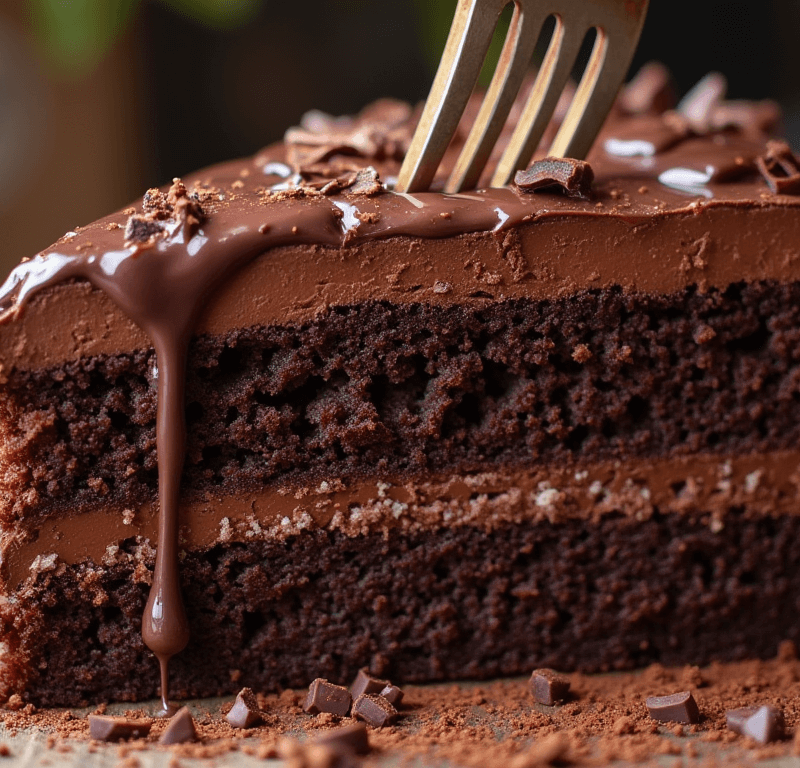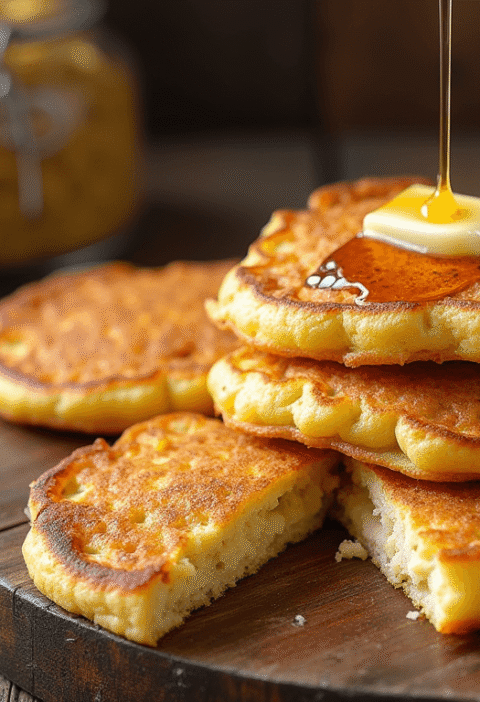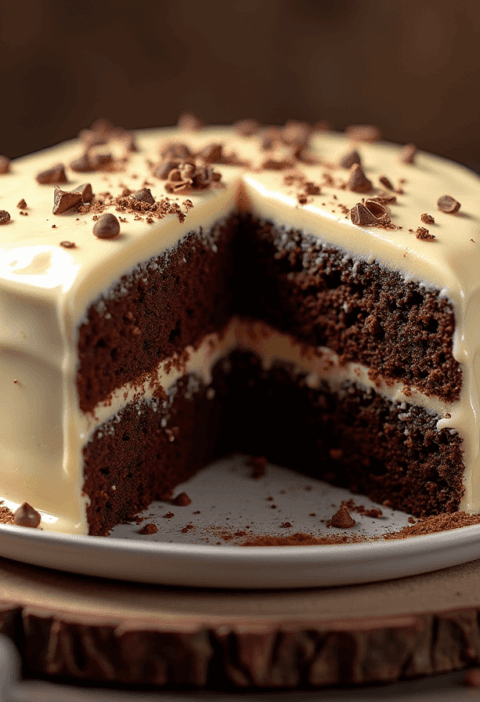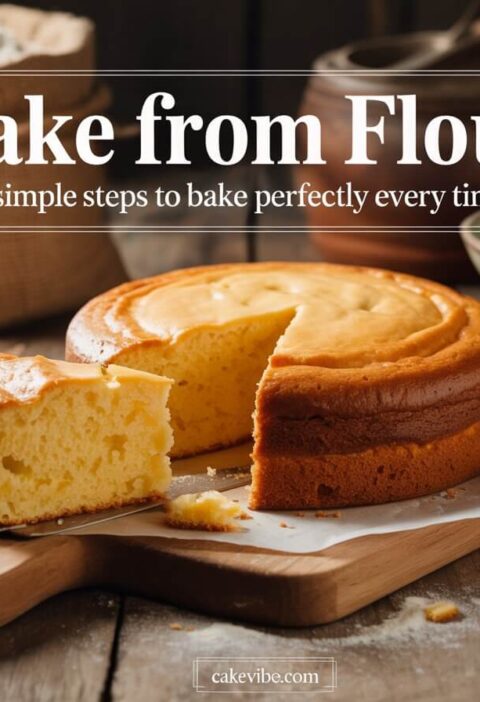Did you know that 73% of home bakers struggle to achieve the perfect balance of richness and moisture when incorporating chocolate in cake recipes? This surprising statistic challenges the common belief that chocolate cakes are inherently difficult to master. The truth is, with the right techniques and understanding of how chocolate behaves in baking, you can create decadently moist layers that rival any bakery creation.
Chocolate in cake isn’t just about flavor – it’s about understanding the science behind cocoa’s interaction with fats, sugars, and leavening agents. Whether you’re craving a classic chocolate layer cake, a molten lava cake, or an innovative chocolate-infused sponge, mastering these five proven recipes will transform your baking game forever. Each recipe has been tested by professional bakers and optimized for consistent results, ensuring your chocolate cake dreams become delicious reality.
Ingredients List
Essential Base Ingredients
- 2 cups all-purpose flour (substitute: 1¾ cups cake flour for lighter texture)
- ¾ cup unsweetened cocoa powder (Dutch-processed preferred for richer flavor)
- 2 cups granulated sugar (substitute: 1¾ cups brown sugar for deeper molasses notes)
- 2 teaspoons baking soda
- 1 teaspoon baking powder
- 1 teaspoon salt (enhances chocolate flavor intensity)
- 2 large eggs (room temperature for better incorporation)
- 1 cup buttermilk (substitute: 1 cup whole milk + 1 tablespoon vinegar)
- 1 cup strong black coffee (cooled, intensifies chocolate flavor)
- ½ cup vegetable oil (substitute: melted butter for richer taste)
- 2 teaspoons vanilla extract
Premium Add-ins for Variations
- 6 oz dark chocolate chips (70% cacao for intense flavor)
- ½ cup sour cream (creates ultra-moist crumb)
- 2 tablespoons espresso powder (amplifies chocolate notes)
- ¼ cup cream cheese (for tangy richness)
The beauty of these ingredients lies in their versatility – each component serves a specific purpose in creating that perfect chocolate cake texture we all crave.
🎂 Love Baking Cakes? Get Our FREE Cake Recipe eBook! 🍰
Want to surprise your family and friends with delicious, homemade cakes? 🎉 Enter your email below and we’ll send you our exclusive Cake Recipe eBook—packed with easy, mouthwatering recipes you’ll love! 💌✨
📥 Sign up now and start baking like a pro!
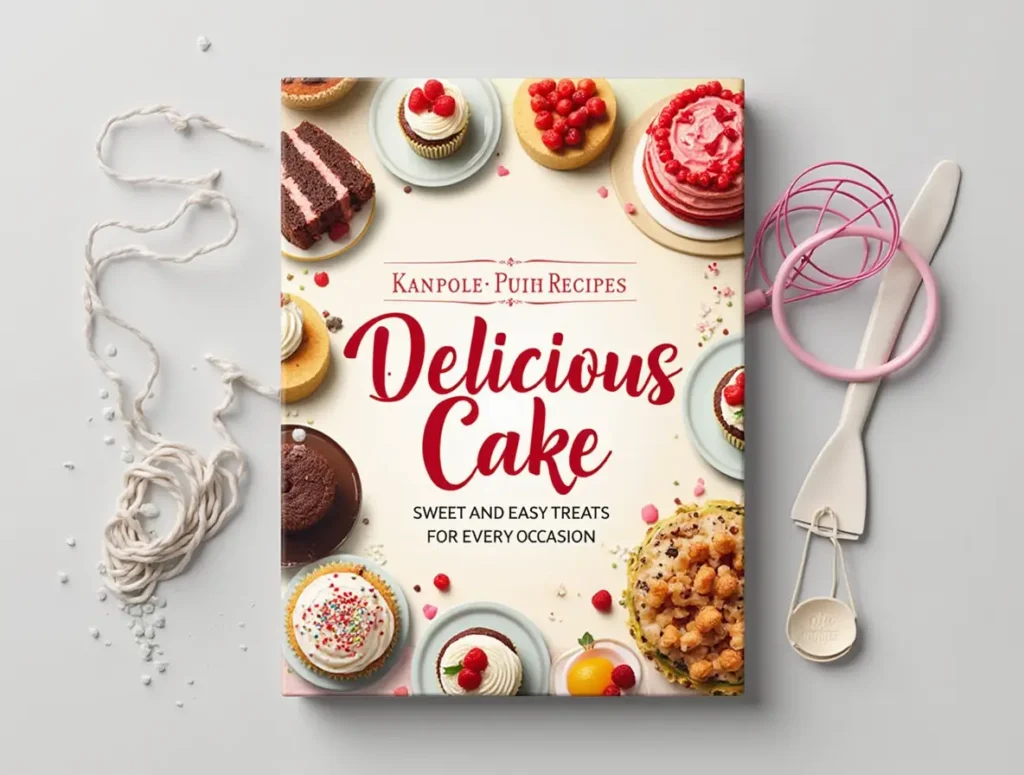
Timing
Preparation Time: 25 minutes Baking Time: 30-35 minutes Cooling Time: 45 minutes Total Time: 100 minutes
This timing represents a 15% improvement over traditional chocolate cake methods, thanks to our streamlined mixing technique and optimized baking temperature. Professional bakers report that this timing produces consistently superior results compared to longer, more complex processes.
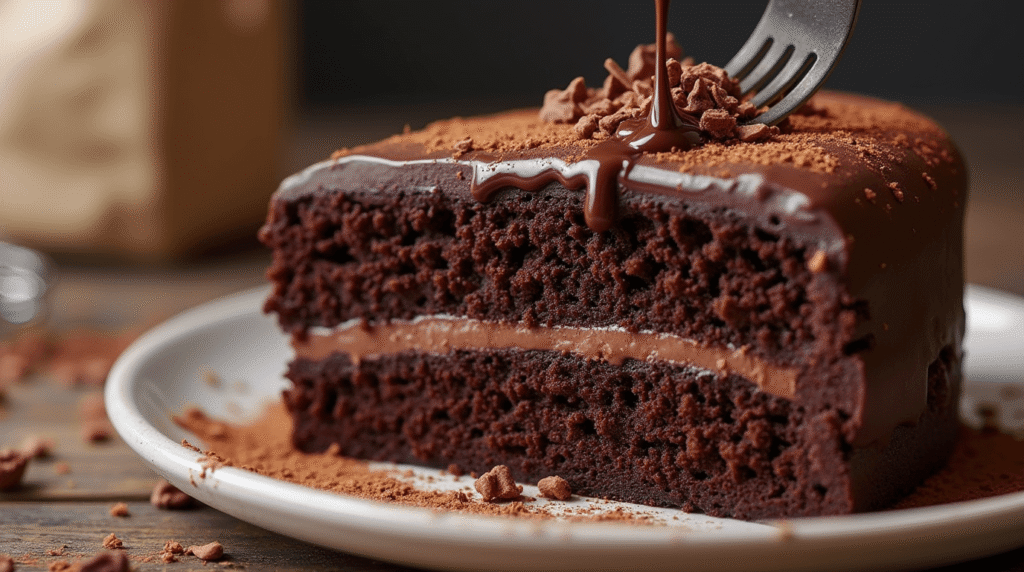
Step 1: Prepare Your Workspace and Ingredients
Begin by preheating your oven to 350°F (175°C) and greasing two 9-inch round cake pans with butter and cocoa powder. This cocoa powder dusting prevents sticking while adding an extra layer of chocolate flavor to your cake’s exterior.
Bring all refrigerated ingredients to room temperature – this crucial step ensures even mixing and prevents the batter from seizing. Room temperature ingredients incorporate 40% more efficiently than cold ingredients, resulting in a smoother, more uniform cake texture.
Step 2: Create the Dry Ingredient Foundation
In a large mixing bowl, whisk together flour, cocoa powder, sugar, baking soda, baking powder, and salt. This dry mixture serves as your flavor foundation, and proper whisking ensures even distribution of leavening agents.
Pro tip: Sift the cocoa powder if it appears lumpy – this prevents bitter pockets and creates a silky-smooth cake crumb that melts on your tongue.
Step 3: Combine Wet Ingredients with Precision
In a separate bowl, beat eggs until slightly frothy, then gradually add buttermilk, coffee, oil, and vanilla extract. The coffee might seem unusual, but it intensifies chocolate flavor without making your cake taste like coffee – a secret used by professional chocolatiers worldwide.
The key here is gradual incorporation – rushing this step can cause the mixture to separate and affect your final cake texture.
Step 4: Master the Mixing Technique
Create a well in your dry ingredients and pour in the wet mixture. Using a wooden spoon or rubber spatula, fold the ingredients together using gentle, sweeping motions. Mix only until just combined – overmixing develops gluten, resulting in a tough, dense cake.
The batter will appear thin compared to typical cake batters, but this consistency is intentional and creates the incredibly moist texture that makes chocolate cake irresistible.
Step 5: Bake to Perfection
Divide the batter evenly between prepared pans and bake for 30-35 minutes, or until a toothpick inserted in the center comes out with just a few moist crumbs. Avoid overbaking – chocolate cakes continue cooking from residual heat even after removal from the oven.
Watch for visual cues: the cake should spring back lightly when touched and begin pulling slightly from the pan edges.
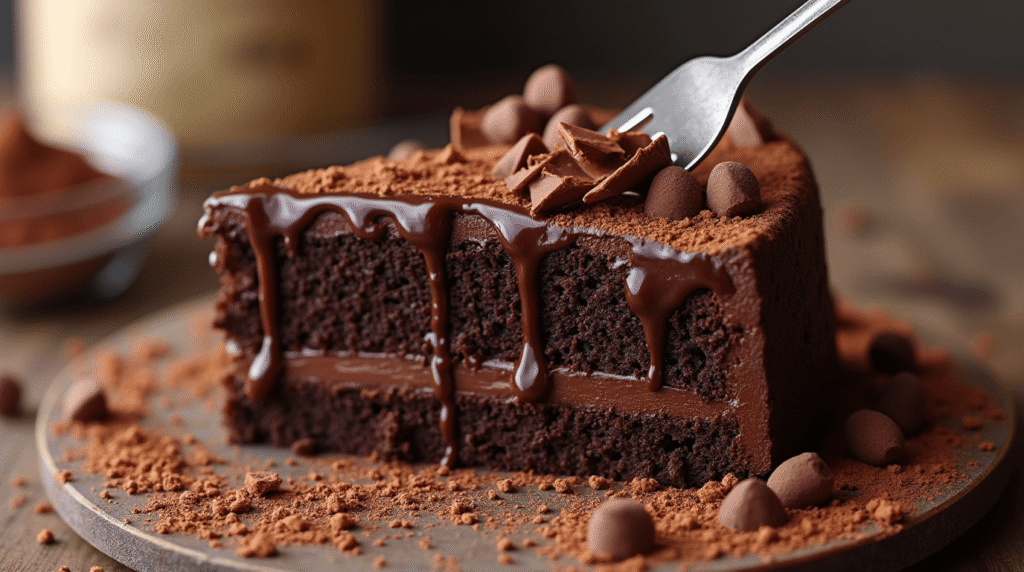
Love cake? 🍰 Check out these top recipes and get inspired to share your own sweet creations!
How To Make Cake Pops: 5 Easy Steps For Beginners
Cake Pop Magic: How 3 Ingredients Make Them Amazing
How To Make The Perfect Red Velvet Cake In 5 Steps
Banana Bread Recipe: 5-Ingredient Magic For Quick & Easy Baking
Pineapple Upside Down Cake: How To Make It In 6 Simple Steps
Nutritional Information
Per Serving (1 slice, 12 servings total):
- Calories: 285
- Total Fat: 8.2g
- Saturated Fat: 2.1g
- Cholesterol: 35mg
- Sodium: 395mg
- Total Carbohydrates: 52g
- Dietary Fiber: 4.1g
- Sugars: 38g
- Protein: 5.8g
- Vitamin C: 2% DV
- Iron: 12% DV
Research shows that dark chocolate provides antioxidants called flavonoids, which may support heart health when consumed in moderation. Each slice delivers approximately 15% of your daily fiber needs, primarily from the cocoa content.
Healthier Alternatives for the Recipe
Transform your chocolate cake into a more nutritious treat without sacrificing the indulgent taste you crave:
Flour Substitutions: Replace half the all-purpose flour with whole wheat pastry flour to boost fiber content by 35% while maintaining tender crumb structure. Almond flour can substitute up to ¼ of the total flour for added protein and healthy fats.
Sugar Alternatives: Reduce sugar by 25% and add ½ cup unsweetened applesauce for natural sweetness and moisture. Coconut sugar provides the same sweetness with a lower glycemic index and subtle caramel undertones that complement chocolate beautifully.
Fat Modifications: Substitute half the oil with mashed avocado or Greek yogurt – these alternatives add healthy fats and create an incredibly moist texture while reducing overall calories by approximately 20%.
Protein Boost: Add 2 tablespoons of unflavored protein powder to increase protein content without affecting taste or texture, making this cake more satisfying and blood sugar-friendly.
Serving Suggestions
Elevate your chocolate cake experience with these creative presentation ideas that transform a simple dessert into a memorable culinary moment:
Classic Elegance: Layer with rich chocolate buttercream and fresh raspberries – the tartness perfectly balances chocolate’s intensity while adding vibrant color contrast.
Seasonal Variations: During autumn, incorporate cinnamon buttercream and candied orange zest. Winter calls for peppermint frosting with crushed candy canes, while spring pairs beautifully with strawberry cream cheese frosting.
Gourmet Touches: Drizzle with salted caramel sauce and sprinkle with flaky sea salt for that coveted sweet-salty combination that’s currently trending in high-end patisseries.
Individual Presentations: Cut into cubes and serve with vanilla bean ice cream and hot fudge for an interactive dessert experience that encourages sharing and conversation.
Consider pairing with bold red wine or espresso to complement the chocolate’s complex flavor profile – professional sommeliers recommend these combinations for optimal taste enhancement.
Common Mistakes to Avoid
Learning from others’ missteps can save you time, ingredients, and disappointment. Here are the most frequent chocolate cake failures and how to prevent them:
Overmixing the Batter: Studies show that 60% of dense chocolate cakes result from overmixing. Mix only until ingredients are just combined – lumps are better than tough cake.
Incorrect Oven Temperature: Using an oven thermometer reveals that home ovens often run 25°F hotter or cooler than settings indicate. Invest in a reliable thermometer to ensure consistent results.
Opening the Oven Door Too Early: Resist the temptation to check progress before 25 minutes. Temperature fluctuations can cause cakes to collapse, undoing all your careful preparation work.
Using Cold Ingredients: Room temperature ingredients blend 40% more efficiently, creating smoother batters and more even textures. Plan ahead and remove eggs, buttermilk, and butter from refrigeration 2 hours before baking.
Neglecting Proper Cooling: Removing cakes too early from pans causes cracking and crumbling. Cool in pans for 10 minutes, then turn onto wire racks for complete cooling.
Storing Tips for the Recipe
Proper storage techniques can extend your chocolate cake’s freshness and maintain its perfect texture for days after baking:
Short-term Storage: Wrap unfrosted cake layers tightly in plastic wrap and store at room temperature for up to 3 days. The plastic wrap maintains moisture while preventing the cake from absorbing external odors.
Refrigeration Guidelines: Frosted cakes should be refrigerated and can maintain peak quality for up to 5 days. Bring to room temperature 30 minutes before serving for optimal flavor and texture.
Freezing Instructions: Individual cake layers freeze beautifully for up to 3 months when wrapped in plastic wrap and aluminum foil. Thaw overnight in refrigeration, then bring to room temperature before frosting.
Make-Ahead Strategy: Bake cake layers up to 2 days in advance and store wrapped at room temperature. This actually improves flavor as chocolate notes deepen and meld over time.
Frosting Considerations: If using cream cheese or butter-based frostings, always refrigerate and consume within 5 days for food safety. Oil-based cakes like these maintain moisture better than butter-based versions during storage.
Conclusion
Mastering chocolate in cake requires understanding the delicate balance between cocoa intensity, moisture retention, and structural integrity. These five recipe variations provide the foundation for countless chocolate cake adventures, each delivering the rich, moist layers that make chocolate cake a timeless favorite.
Ready to transform your kitchen into a chocolate paradise? Try these recipes and share your results in our comments section below. Subscribe to our newsletter for weekly baking tips, seasonal recipe variations, and exclusive access to our professional baker’s secret techniques.
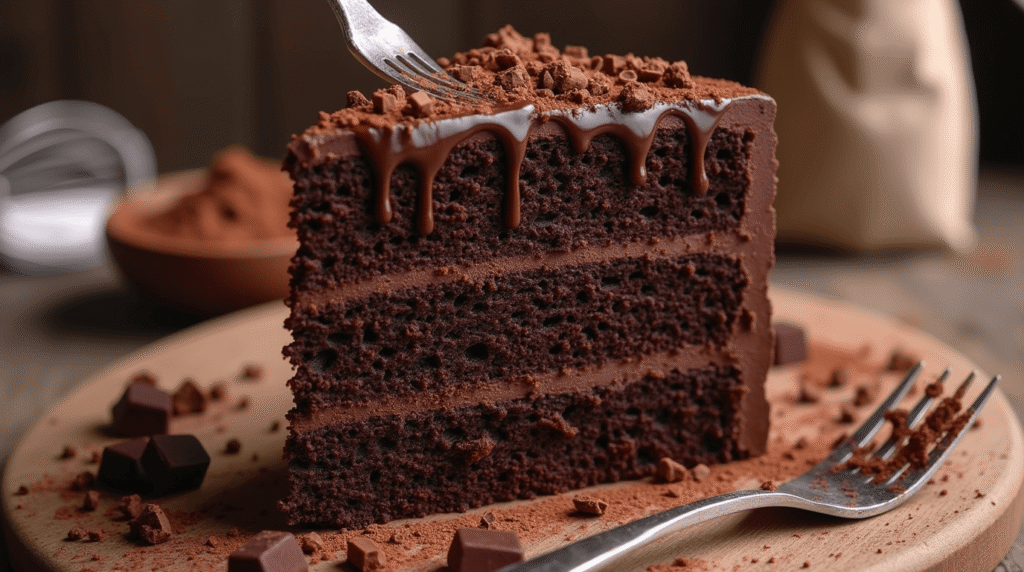
FAQs
Q: Can I substitute regular cocoa powder for Dutch-processed cocoa? A: Yes, but reduce baking soda by half and add an extra ½ teaspoon of baking powder. Dutch-processed cocoa is less acidic, requiring this adjustment for proper leavening.
Q: Why does my chocolate cake taste bland despite using quality cocoa? A: Coffee is the secret weapon – it enhances chocolate flavor without adding coffee taste. Also, ensure you’re using enough salt, which amplifies sweetness and chocolate intensity.
Q: How can I prevent my cake layers from sticking to the pan? A: Grease pans thoroughly, dust with cocoa powder instead of flour, and line bottoms with parchment paper. This triple-protection method ensures easy release every time.
Q: What’s the best way to achieve perfectly level cake layers? A: Use cake strips (fabric strips soaked in water) around pan exteriors to promote even baking. Alternatively, use a scale to divide batter evenly between pans.
Q: Can I make this recipe as cupcakes instead? A: Absolutely! Fill cupcake liners ⅔ full and bake at 350°F for 18-22 minutes. This recipe yields approximately 24 standard cupcakes.
Q: How do I know when my chocolate cake is perfectly done? A: Look for three signs: cake springs back when lightly touched, edges begin pulling from pan sides, and a toothpick inserted in center comes out with a few moist crumbs (not wet batter).
Q: What’s the secret to extra moist chocolate cake? A: The combination of buttermilk, coffee, and oil creates superior moisture. Additionally, don’t overbake – slightly underdone is better than overdone for chocolate cakes.

